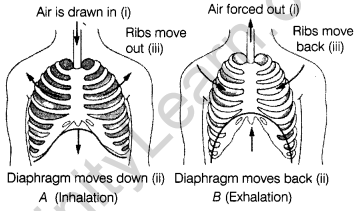Table of Contents

Regulation of Respiration. Humans have a stimulating ability to manage and maintain their respiratory rhythm to satisfy the wants of their bodily tissues. The neurological system oversees this. This regulation of respiration is primarily controlled by the respiratory rhythm centre, which is within the medulla region of the brain. The pneumotaxic centre, located within the pons area of the brain, can modulate the actions of the respiratory rhythm centre. This center’s neural input can shorten the time of inspiration and then change the respiration rate. A chemosensitive region, which is especially sensitive to hydrogen ions, is found regarding the rhythm centre. Increases in these compounds can activate this centre, which may tell the rhythm centre to create suitable changes within the respiratory process to eliminate these poisons. Changes in concentration also can be detected by receptors within the aorta and artery, which transmit required signals to the rhythm centre for corrective action. The importance of oxygen in the regulation of respiratory rhythm is minor.
Explanation For Regulation of Respiration
- The regulation of respiration is primarily controlled by the respiratory rhythm centre, which is within the medulla region of the brain.
- The pneumotaxic centre, located within the pons area of the brain, can modulate the actions of the respiratory rhythm centre.
- This centre’s neural input can shorten the time of inspiration and then change the vital sign.
A chemosensitive region, which is especially sensitive to hydrogen ions, is found regarding the rhythm centre. - Receptors may also detect changes in concentration within the aorta and arterial blood vessel, which transmit required signals to the rhythm centre for corrective action.
The intricate interaction of three components of the respiratory system:
1) the control centres,
2) the sensors,
3) the effector organs are required for breathing regulation.
The control centres are within the brainstem and are chargeable for breathing’s automaticity. To induce intentional breathing, input into these respiratory centres may be initiated from higher brain centres. The respiratory sensors, which are split into chemoreceptors and sensory receptors, also send afferent brain signals to the central system. Chemoreceptors deliver impulses to the control centre in response to changes in blood oxygen, dioxide, and cation concentrations, causing the ventilatory pattern to alter by altering the effector organs—the breathing muscles. The upper and lower airways, the lung, and respiratory muscles all have sensory receptors. They’ll even have a major impact on breathing patterns. The stimulation of those receptors is believed to play a task in the onset of hyperventilation and cough in lung illnesses like asthma. Recent research also suggests that asthma patients with near-fatal events have aberrant respiratory chemoreceptor responses.
Chemical control of breathing
Chemical control of breathing affects the activity of the respiratory centre and adjusts ventilation proportionate to actual metabolic demands via changes in blood chemistry. Two control systems ensure chemical control of breathing. The carotid and aortic bodies include peripheral chemoreceptors. They’re sophisticated sensors that will detect cation concentration and blood oxygen partial pressure. Central chemoreceptors are found at the ventrolateral surface of the medulla and see the concentration of H+ ions in their immediate surroundings. Measuring the chemoreflex can provide crucial information about the regulatory system’s function in both normal and pathological settings, like when there’s respiratory instability.
Regulation connection to the brain
- The ventral respiratory group is to blame for controlling voluntarily forceful exhale and increasing the force of inspiration.
- Most inspiratory movements and timing are controlled by the dorsal respiratory group (nucleus tractus solitarius).
- The ventilation rate (minute volume) is strictly controlled and determined by blood dioxide levels as measured by rate.
- Chemoreceptors can detect variations in blood pH that necessitate automatic breathing alterations to rectify.
- The pons’ apneustic (stimulating) and pnuemotaxic (limiting) areas collaborate to manipulate breathing rate.
- The medulla controls non-respiratory air movement responses like coughing and sneezing by sending signals to the muscles that initiate inspiration and expiration.
- The excitable area of the cerebral mantle oversees voluntary breathing (the ascending respiratory pathway).
- Aspects of automatic respiration, like chemoreceptor stimulation and the hypothalamic stress response, can override voluntary breathing.
- The principal nerves involved in respiration include the phrenic nerves, vagus nerves, and posterior thoracic nerves.
- Higher functions, like voice control, require voluntary respiration.
- Due to the creation of H+ ions from acid, an increase in CO2 concentration causes a drop in blood pH.
- The respiratory centre (in the medulla) sends nerve signals to the external intercostal muscles and, therefore the diaphragm in response to a drop in blood pH, increasing breathing rate and lung volume during inhalation.
- Hypoventilation creates alkalosis, which ends up in an exceeding feedback response of decreased ventilation (to increase carbon dioxide). In contrast, hyperventilation ends up in acidosis, which ends up during a feedback response of increased ventilation (to decrease carbon dioxide) (to remove carbon dioxide).
FAQs
Question: What are the three components of the respiratory system?
Answer: The intricate interaction of three components of the respiratory system:
- the control centres,
- the sensors,
- the effector organs
What is chemosensitive region?
A chemosensitive region, which is especially sensitive to hydrogen ions, is found regarding the rhythm centre.



